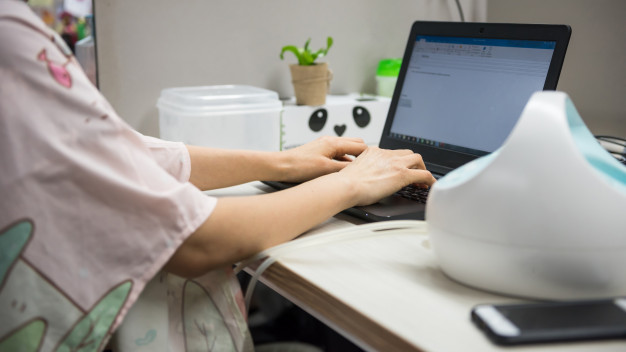The pioneer mother on the prairie had lots to do besides nurse her babies, and even modern mothers who are at home during the day struggle with the work of running busy households while responding to the needs of their infants. As World Breastfeeding Week rolls around, it’s a good opportunity to talk about why it’s so important for businesses and workplaces to support nursing moms, along with easy ways to do so.
There will be days when you wonder if it’s all worth it. You’ll leak at embarrassing moments, and you may be on the receiving end of less than supportive comments from people who don’t understand what you’re going through. There will be days where you’ll be ready to toss in the pump and reach for the formula. Yet, once you make a Commitment to continuing to breastfeed, you’ll find a way to do it. Don’t let your preoccupation with the day you need to return to “W” day rob you of the joy of those weeks of being a full-time mother.
You need to breastfeed early and often to encourage your breasts to produce lots of milk. Feeding your baby on cue will get your milk supply in line with your baby’s needs.
Believe it or not, breastfeeding is good for your employer too. Working mothers with adequate maternity benefits, which include a breastfeeding-supportive workplace, report much greater job satisfaction and loyalty to their employers. Because breastfed children tend to fall sick less often, their mothers are absent from work less often as well. All of this contributes to higher productivity in the workplace.

Practice expressing your milk using a breast pump before you go back to work. In the days and weeks before you return to work, help ease your baby into the transition by introducing him/her to breastmilk from a bottle or a cup, depending on their age.
If you’re planning to pump when you return to work, don’t just show up on the first day with your breast pump in hand. Talk to your employer in the weeks before you return from maternity leave, to make a plan for when and where you can pump when you’ve returned to work.
Demand for your lactation breaks — it’s the law. Breastfeeding moms should not have to use their breaks and lunch period to pump. Lactation breaks should go above and beyond whatever regular breaks they normally have, which should not be less than a total of 40 minutes for every eight-hour working period.
No one wants to sit in a cramped bathroom stall pumping, or have to go out to their car. Companies are also mandated to provide a lactation station. Office lactation rooms should have facilities, such as lavatory for hand-washing, refrigeration or appropriate cooling facilities for storing expressed breast milk, electrical outlets for breast pumps, tables and chairs.
Pumping breast milk at work can be a challenge, but it’s much easier when you have a breast pump that is right for you and your body. Breast pump types include manual pumps, battery-powered pumps, electric diaphragm pumps, electric piston pumps. Electric piston pumps may be most suitable for mothers who work outside the home for more than 20 hours per week. When pumping at work, remember that breast milk can be stored at room temperature for eight hours, refrigerated for up to eight days and frozen for many months. There are a lot of breast milk storage bags and storage bottles to choose from at different prices. Go with bottles if you’re not a fan of plastic.

The amount of breast milk to stash at home depends on your baby. You just have to observe and learn your baby’s pattern. Make sure you still breastfeed your baby directly to keep your milk supply up.
Try to arrange childcare at or near your work. Find someone you can trust who is supportive of breastfeeding to care for your child.
Breastfeed your baby before you leave for work in the morning. If you have time, pump any remaining milk if he doesn’t fully drain your breasts.
Try to relax when you’re pumping, which can be hard at work. Keep a set of baby’s clothing in your purse so you can smell it or look at a picture of your baby to trigger letdown. Or consider recording your baby crying or cooing and listening to it as you pump.
When you get home from work, nurse while you rest lying down. And remember, carrying your baby in a sling can help both to feel safe and connected while going about your daily routines. It’s okay if your baby’s breast milk feedings need to be supplemented occasionally. You’re an amazing mom, and any breastmilk you’re able to provide is a wonderful thing. As long as your baby is loved and cared for, he/she will grow up healthy and happy.
Your breasts can have a mind of their own when you start to push back your pumping session. You can become engorged and before you know it, milk will leak out. [This is one of the most embarrassing parts of being a mom] Your best bet is to wear breast pads in your bra to absorb any leaks. You may also want to toss an extra shirt into your breastfeeding bag for any emergencies you’ll have.
Just because you’re breastfeeding, doesn’t mean you have to settle for full-coverage if that’s not your preference. Giving your baby feeding access just got way easier, thanks to LOVZme’s nursing bras.

